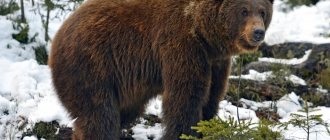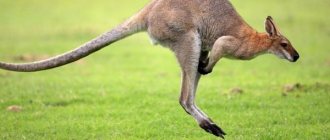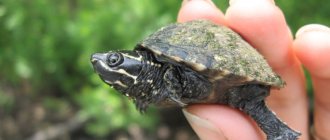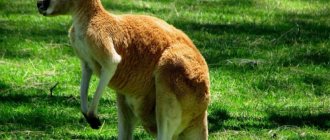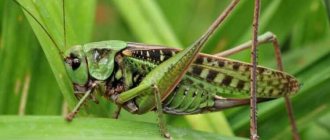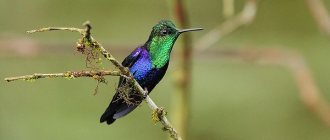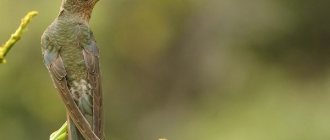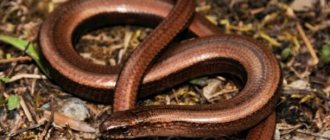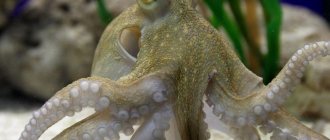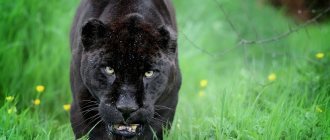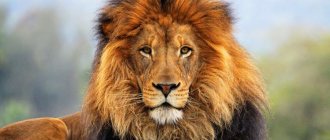- Wild animals
- >>
- Insects
The dragonfly is an arthropod insect with six legs, belonging to the subclass of winged insects, the order of dragonflies. The order of dragonflies currently includes more than 6,650 species of these insects. Dragonflies are fairly large predatory insects that have a movable head, large eyes, a long and slender abdomen and four transparent wings. They are found all over the world, with the exception of cold Antarctica.
Origin of the species and description
Photo: Dragonfly
Odonata or dragonflies are predatory insects belonging to the phylum Arthropoda, subclass of winged insects and order Dragonfly. This detachment was first described by Fabricius in 1793. Dragonflies are a very large order, which includes 6,650 species. Currently, 608 species are classified as extinct, and 5899 species of these insects inhabit our planet in modern times.
The dragonfly order is divided into 3 suborders:
- heteroptera;
- Homoptera;
- anisozygoptera.
Dragonflies are a very ancient group of insects. The first dragonflies inhabited the earth back in the Carboniferous period of the Paleozoic era. These insects are descended from the giant dragonfly-like insects Meganeura. Meganeuras were large insects with a wingspan of up to 66 cm. These insects were considered the largest insects of ancient times. Meganeura later gave birth to the following groups of their descendants: Kennedyina and Ditaxineurina, these groups of insects lived in the Triassic period of the Mesozoic era. They were large; the wings of these insects were about 9 cm long. During rest, they folded under the abdomen of the insect.
Video: Dragonfly
The insect also developed a trapping basket, used for grasping prey. During the Jurassic period, the following groups came: Lestomorpha and Libellulomorpha in these insects, the larvae developed in an aquatic environment and they had an improved flying apparatus. Insects of the Libellulida group inhabited Africa, South America and Australia in the Triassic period. Meganeuras still lived in Eurasia at that time, but during the course of evolution their bodies and habits changed. In the Jurassic period, meganeurins reached the pinnacle of evolution and populated all of Eurasia. These insects had a “catching basket” and could use it to hunt during flight. Gas exchange in this group was carried out using the respiratory epithelium, but there were also lamellar gills, which changed over time, ceased to perform a gas exchange function and were replaced by internal gills.
At the same time, the descendants of the family Calopterygoidea have evolved greatly from the original state. The wings of these insects narrowed, became stalked and the size of the wings became the same. In the Jurassic period, insects of the suborder Anisozygoptera become the most common; their numbers sharply decrease during the Cretaceous period, but this group remains widespread throughout the entire polygenic period. During this period, such species of dragonflies as Coenagrionidae, Lestidae and Libelluloidea, etc. almost disappear. The Cenozoic fauna is already inhabited by modern species of dragonflies. During the Neocene, the ethnofauna was no different from the modern one. The Zygoptera population declined sharply, but Coenagrionidae and Lestidae became the most common species.
Beauties
In general, the order of dragonflies stands out among other orders of insects for its aesthetic merits. And it’s basically impossible not to admire the representatives of the family of beauties. For example, beautiful girls are small (up to 5 cm long), thin even-winged dragonflies with a wingspan of no more than 7 cm. The body and wings of males are colored in blue, green, purple shades and have a metallic sheen.
In females, the body is colored, but the wings are not. Beauties prefer the overgrown banks of quiet rivers and small streams. They lay eggs in the leaves of coastal plants; The larvae also try to stay close to the stems and roots. The flight of a beautiful girl resembles the flight of a butterfly.
Appearance and features
Photo: What a dragonfly looks like
All dragonflies have a very recognizable appearance. The coloring of these insects may vary.
The insect's body secretes:
- head with big eyes;
- brightly colored shiny body;
- breast;
- transparent wings.
These insects, depending on the species, can be of different sizes: the smallest dragonflies are 15 mm long, and the largest are about 10 cm long. The head is large and can rotate 180°. On the head of the dragonfly there are eyes, which consist of a large number of ommatidia, their number ranges from 10 to 27.5 thousand. The lower ommathia can perceive only colors, and the upper ones only the shapes of objects. Thanks to this feature, the dragonfly can navigate well and easily find prey. The parietal part is swollen, with three ocelli located on the crown. The dragonfly's antennae are short, awl-shaped and consist of 4-7 segments.
The mouth is powerful, formed by two unpaired lips - upper and lower. The lower lip consists of 3 lobes and covers the powerful lower jaws. The upper one has the shape of a short plate, which is elongated in the transverse direction; it covers the upper jaw. The lower lip is larger than the upper lip, thanks to which the insect can chew prey during flight.
The chest consists of 3 sections: prothorax, metathorax and mesothorax. On each part of the chest there is a pair of limbs, and on the middle and back parts there are insect wings. The front part is separated from the middle part. The middle and back parts of the chest are fused and form a synthorax, which is perceived as the chest. The shape of the chest is flattened from the sides, the part of the chest located on the back is pushed back. The mesothorax is located above the metathorax, causing the wings to intertwine behind the legs. The pronotum is divided into 3 lobes; there is usually a depression on the middle lobe. The segments on which the wings are located are hypertrophied pleurites.
The wings are transparent, consist of two chitinous layers, each of them is formed by its own system of veins. These veins overlap each other, so the network of them appears to be one. The venation is complex and dense. Different orders of these insects have different venation systems.
The dragonfly's abdomen is mostly round and elongated. In rare species it is flat. The abdomen makes up most of the insect's body. Consists of 10 segments. On the sides there are pleural membranes that allow the dragonfly to bend. All segments besides 9 and 10 have one sigma. At the end of the abdomen there are anal appendages: females have 2, males have 3-4. In females, the genitals are located at the end of the abdomen; in males, the compilatory organ is located on the 2nd segment of the abdomen, the vas deferens is located on the tenth segment of the abdomen. The limbs are strong and developed and consist of: thigh, coxa, tibia, vetluga, and tarsus. There are spines on the limbs.
Rocker arms
These are large, bright and expressively colored dragonflies. Representatives of the order of dragonflies rarely have such endurance: rockers can fly many kilometers from their native body of water (it happened that they were seen over the ocean). The size of these insects also inspires respect: the wingspan of the watchman-overlord (or emperor) reaches 8 cm.
The patrolmen's chest is greenish, their abdomen is blue, with a yellow ring. The wings of males are completely colorless, while those of females are barely yellowish. The organs of vision are bluish-green. Watchmen live near stagnant, often drying up bodies of water. They lay their eggs in rotting plant tissues immersed in water. Their large larvae are able to cope even with fish fry.
In addition to those mentioned above, in the European part of Russia there are representatives of such families as: grandmothers, lyutki, cordulegasteridae. All dragonflies are considered beneficial. They eat blood-sucking insects and pests and, in turn, are food for birds and fish.
Where does the dragonfly live?
Photo: Pink dragonfly
Dragonflies are widespread throughout the world. These insects cannot be found, probably, only in Antarctica. A special variety of species of these insects can be found in the Indo-Malayan zone. About 1,664 species of dragonflies live there. There are 1,640 species in the Neotropics. And also, dragonflies love to settle in the Afrotropics; about 889 species live there; in the Australian region there are about 870 species.
In countries with a temperate climate, fewer species of dragonflies live, this is explained by the heat-loving nature of these insects. There are 560 species in the Palearctic and 451 species in the Nearctic. To live, these insects choose places with a warm and humid climate. The presence of a reservoir is very important for dragonflies; during the mating season, the female lays eggs in water, eggs and larvae develop in an aquatic environment. Depending on the species, dragonflies have different attitudes towards the choice of reservoirs and the need to live near water. For example, dragonflies of the species Pseudostigmatinae are content with small water reservoirs in the undergrowth. They can use small ponds, lakes or flooded pits for breeding. Other species live near rivers, ponds and lakes.
The larvae spend their lives in water, and adults, having learned to fly, can fly long distances. Found in meadows and forest edges. Dragonflies love to soak up the sun, this is very important to them. With the onset of cold weather, dragonflies fly to countries with warmer climates. Some dragonflies fly up to 2900 km. Sometimes dragonflies migrate in especially large numbers. Flocks numbering up to 100 million thousand individuals have been observed. But more often, dragonflies do not flock together, but fly alone.
Now you know where the dragonfly lives. Let's see what she eats.
What does a dragonfly eat?
Photo: Dragonfly in nature
Dragonflies are predatory insects. Adults feed on almost all types of insects inhabiting the air.
The diet of dragonflies includes:
- mosquitoes;
- flies and midges;
- mole;
- beetles;
- spiders;
- small fish;
- other dragonflies.
Dragonfly larvae feed on mosquito and fly larvae, small crustaceans, and fish fry.
Based on their hunting methods, these insects are divided into several subspecies:
- free hunters who hunt in the upper tier. This group includes species of dragonflies with powerful and developed wings that can fly well and quickly. These species may use school hunting, but more often hunt alone at heights from 2 to 9 meters above the ground;
- free-flying predators hunting in the middle tier. These dragonflies hunt at heights of up to 2 meters. They are always in search of food; to rest, they can sit on the grass for a few minutes, and then begin to hunt again;
- dragonflies lying in wait. This species is distinguished by its unusual way of hunting. They sit quietly on the leaves or stems of plants, looking out for prey, from time to time breaking off to attack;
- dragonflies living in the lower tier. These dragonflies hunt in thickets of grass. They flutter slowly from one plant to another in search of insects that are sitting on the plant. This species eats prey while sitting on a plant, and does not eat while flying.
Interesting fact: Cannibalism is very common among all species of dragonflies. Adult dragonflies can eat smaller dragonflies and larvae. Sometimes females after mating can attack the male and eat him.
Nutrition
Dragonflies feed on a wide variety of insects. Their diet also includes blood-sucking animals: midges, mosquitoes, horseflies. The body shape of these creatures, which helps them fly beautifully, also provides them with significant service during hunting.
Dragonflies tend to attack their victims from below, overtaking them in the air. There is an explanation for this, because against the background of the sky, the visual organs of these predators, which actively react to ultraviolet and blue colors, are able to perceive objects best.
These insects are naturally endowed with a powerful mouth and serrated jaws, which helps them deal with prey. And its capture is facilitated by special claws, hard hairs on the legs and short antennae.
Dragonflies can eat weak members of their species
In an effort to get food for itself, a dragonfly is capable of engaging in single combat with an opponent that is larger than it. These creatures are very voracious, which brings considerable benefit by exterminating mosquitoes, flies and harmful insects.
They start hunting at dawn, and as soon as the sun sets, they settle down to sleep on the leaves of plants.
Features of character and lifestyle
Photo: Blue Dragonfly
In our country, dragonflies live from late April to October. In warm and tropical countries, these insects live all year round. Dragonflies are diurnal insects. They are most active in sunny and warm weather.
In the morning, dragonflies try to bask in the sun, sitting on stones or pieces of wood. During the midday heat, they adopt a “glow” position, in which the luminous tip of the abdomen is directed towards the sun. This reduces the insect's body exposure to sunlight and helps avoid overheating.
Interesting fact: Dragonflies practically do not use their legs for movement; they are used only during takeoff and landing. The hind limbs are used to capture prey.
Dragonflies go hunting in the morning and evening. Some species are more active at dawn. During the daytime, dragonflies are busy procreating their species. At night, insects hide among thickets of foliage and grass. Mostly dragonflies live alone.
Interesting fact: Thanks to the structure of their wings, dragonflies can fly very quickly, make interesting turns in the air, and migrate long distances. Due to the fact that dragonflies are good at the art of flight, they are very difficult for predators to catch.
Spotted inhabitants of America
The eight-spotted dragonfly lives in North America. It received this name because it has two black spots on each wing. And since the dragonfly has four wings, there are eight spots in total. The insect also has white spots. They are usually present in males, less often in females. You can meet these beauties from April to October.
This is what the American wings look like
Kelitemys dragonfly is native to America
Social structure and reproduction
Photo: Dragonflies
These insects go through three stages of transformation:
- egg;
- naiads or larvae;
- adult insects (imago).
Many dragonflies are capable of producing more than one offspring per year. Insects mate in the air. Before mating, males perform a kind of ritual dance in front of the female. They fly around her, doing unusual things in the air. After mating, females lay from 260 to 500 eggs. The reason for the death of eggs is their eating by other creatures, including dragonflies.
Also, water pollution, or a decrease in air temperature. In favorable conditions, the larvae hatch from the eggs in a couple of days, but often in temperate climates, the larvae do not hatch until the following spring.
Interesting fact: Dragonfly eggs can survive the winter unchanged and the larvae will hatch the following spring.
Just hatched from the egg, the size of the larvae is 1 mm. At this stage, the larva lives only a few minutes, then begins to molt. Depending on the subspecies, the larvae develop at different times and go through a different number of molts. The larvae are able to feed on their own and lead an underwater lifestyle. Usually the larvae are inactive, burrow into the ground or hide among algae. Dragonfly larvae feed on mosquito larvae and other insects, fry of small fish and crustaceans.
Interesting Facts
Dragonflies are unique representatives of the Earth. They are endowed with many distinctive features that can greatly surprise you. For example:
- Dragonfly eyes are able to perceive ultraviolet light;
- The ancestors of dragonflies were the first aerial insects on Earth, which appeared before dinosaurs;
- The Japanese consider the dragonfly to be the ideals of valor and bravery;
- Dragonflies can fly across entire oceans;
- These insects calculate the trajectory of an attack with 95% accuracy.
- Dragonflies have many more interesting qualities that are still being studied by scientists.
